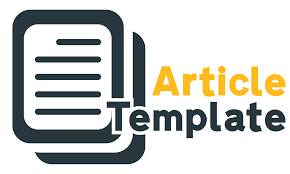Code-Switching Practices of English Lecturers and Student Attitudes: A Sociolinguistic Case Study at Omna Trisakti Chandra Polytechnic (Academic Year 2024/2025)
DOI:
https://doi.org/10.38043/commusty.v4i1.6323Keywords:
code switching, students-attitude, teaching EnglishAbstract
The aims of the study were 1) to classify the code switching which produced by English Lecturers in teaching English as foreign language in Poltek OTC, 2) to identify types of code switching that were mostly used by the lecturers in teaching English as foreign language in Poltek OTC, 3) to describe the functions of code switching that were produced by the lecturers, 4) to describe the students’ attitude toward the use of code switching in teaching English as foreign language in Poltek OTC. This was qualitative research and the subject of the research were the students and English lecturers in Poltek OTC in academic year 2024/2025. In this study, the data were collected and analyzed by using Interactive Flows of Activities Model adapted from Miles Huberman (1984) The findings showed that the classification of the code switching used by the lecturers were tag, inter-sentential, and intra-sentential code switching. The most type of code switching produced by the lecturers was intra-sentential code switching (42%), followed by tag code switching (38%), and the last was inter-sentential code switching (20%). Regarding to the functions of the code switching, it was found that there were 8 functions, they were regulatory, emphasis, attention, clarification, sociolinguistic play, instruction, reminding, and motivating. The students’ attitude toward the use of code switching was generally positive. Based on the functions of code switching as dimensions in measuring students’ attitude, it was found that the most positive responses given by the students was sociolinguistic play. From 90 students, 86% of the students gave positive responses towards this function, followed by clarification (84%), emphasis (81%), attention (77%), instruction (75%), lexicalization (74%), and the last was regulatory (73%). From the finding above, it could be summed up that the used of code switching by English lecturers in teaching English as a foreign language in Omna Trisakti Chandra Polytechnic was responded positively by the students.
References
Dwi Andriani, Eka Agustina, & Fahita Al Afiyah. (2024). An analysis of using code switching by the students in learning English as a foreign language at MA Al Fatah Kota Mulya. Fonologi: Jurnal Ilmuan Bahasa Dan Sastra Inggris, 2(2). https://doi.org/10.61132/fonologi.v2i2.656
Ezeh, N. G., Umeh, I. A., & Anyanwu, E. C. (2022). Code switching and code mixing in teaching and learning of English as a second language: Building on knowledge. English Language Teaching, 15(9), 106. https://doi.org/10.5539/elt.v15n9p106
Gendroyono, G., & Baharun, H. (2023). Code-switching in students group discussions in EFL classroom at a university level. Teaching English as a Foreign Language Journal, 2(2), 97109. https://doi.org/10.12928/tefl.v2i2.473
Hazaymeh, W. A. (2022). Teachers Perceptions of Code-Switching Functions and Effects in English as a Foreign language classroom. European Journal of Educational Research, 11(3), 18391849. https://doi.org/10.12973/eu-jer.11.3.1839
Jogulu, L. N. (2024). Code-switching as a teaching and learning strategy in ESL classrooms. International Journal of Humanities, Philosophy and Language, 7(26), 0121. https://doi.org/10.35631/ijhpl.726001
Miles, M. B., & Huberman, A. M. (1984). Qualitative data analysis: A sourcebook of new methods. Sage Publications.
Mustafawi, E., Shaaban, K., Khwaileh, T., & Ata, K. (2022). Perceptions and attitudes of Qatar University students regarding the utility of arabic and english in communication and education in Qatar. Language Policy, 21(1), 75119. https://doi.org/10.1007/s10993-021-09590-4
Nazeri, S., & Amini, D. (2020). Motivational determinants of code-switching in Iranian EFL classrooms motivational determinants of code-switching in Iranian EFL Classrooms motivational determinants of code-wwitching in Iranian EFL classrooms. The Journal of Applied Linguistics and Applied Literature: Dynamics and Advances, 8(1), 151173. https://doi.org/10.22049/jalda.2020.26812.1171
Poplack, S. (2001). Code switching: Linguistic. In International Encyclopedia of the Social & Behavioral Sciences (pp. 20622065). Elsevier. https://doi.org/10.1016/b0-08-043076-7/03031-x
Temesgen, A., & Hailu, E. (2022). Teachers codeswitching in EFL classrooms: Functions and motivations. Cogent Education, 9(1). https://doi.org/10.1080/2331186X.2022.2124039
Tin Tran, N., Tat Nguyen, T., & Hong Pham, H. (2024). Exploring the challenges of L1 negative transfer among Vietnamese English language learners: A qualitative study. REFLections, 31(2).
Downloads
Published
How to Cite
Issue
Section
License
Copyright (c) 2025 I Wayan Erik Susanto, Ida Nyoman Basmantra, Ida Ayu Fortuna Ningrum

This work is licensed under a Creative Commons Attribution-ShareAlike 4.0 International License.















